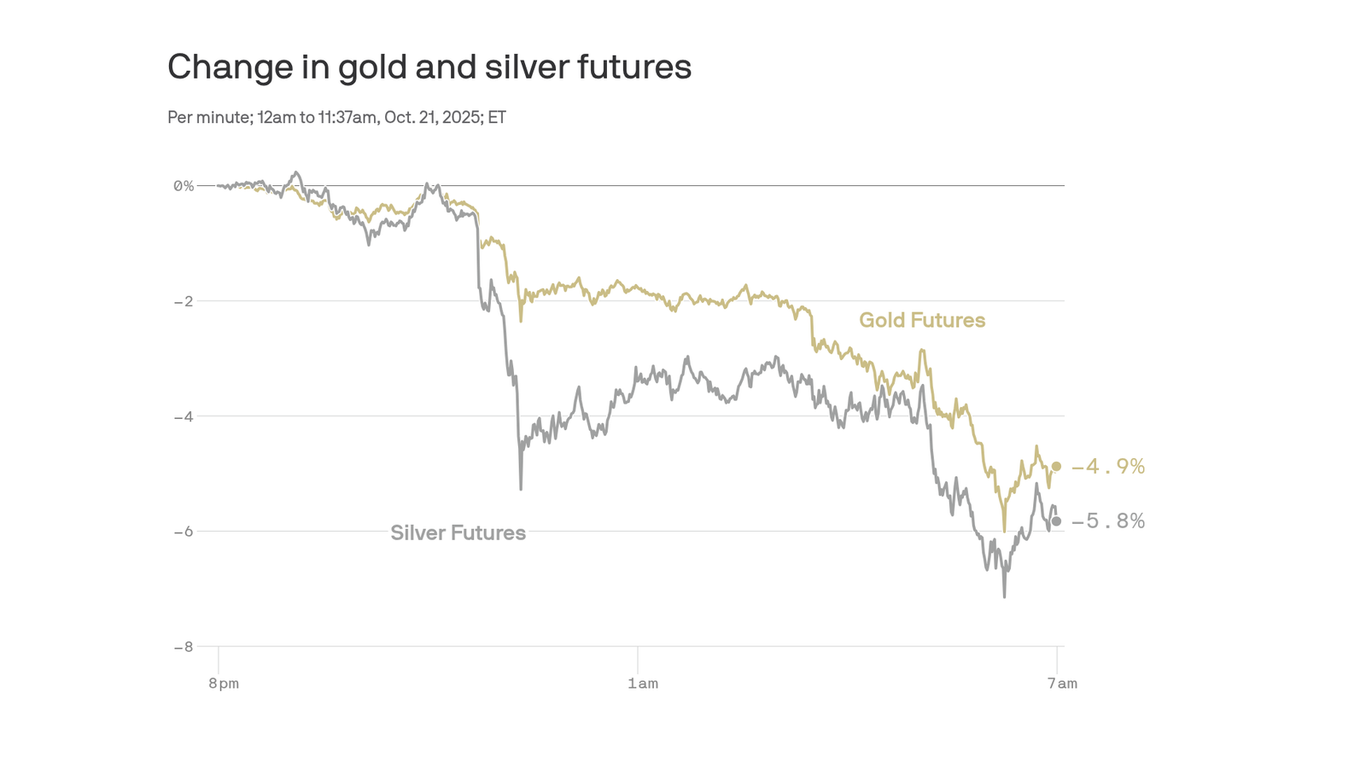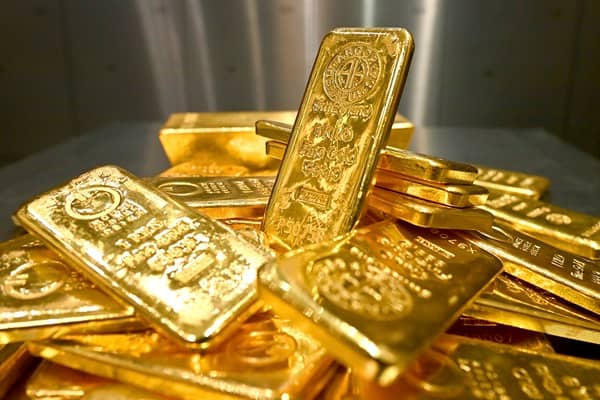#silver
#silver
[ follow ]
#gold #precious-metals #federal-reserve #industrial-demand #federal-reserve-rate-cuts #investing #supply-deficit
Business
fromLondon Business News | Londonlovesbusiness.com
1 month agoSilver slumps below $46 as trade optimism pressures safe-haven demand - London Business News | Londonlovesbusiness.com
Silver fell over 2%, reversing gains and trading below USD 46 after earlier highs near USD 54, pressured by improving trade sentiment and rate-cut expectations.
from24/7 Wall St.
1 month agoSilver Stocks Face A Real Risk of Backwardation (SLV, PSLV, SIVR, SLVR)
Not unlike the inverse yield curve for bonds, which is when short term rates exceed long term ones, backwardation is when spot prices for commodities pull ahead of the futures market. Normally, the precious metals market charts similarly to that of interest rates, with near term prices cheaper than longer term ones, which carry elevated risks of unforeseen change, as well as increased carrying costs.
Business
fromLondon Business News | Londonlovesbusiness.com
1 month agoSilver slides as investors lock in profits amid receding fears - London Business News | Londonlovesbusiness.com
Silver prices fell sharply on Tuesday, retreating from last week's record highs as investors took profits following a rapid rally driven by tight supply conditions and macroeconomic tailwinds. The pullback comes as broader risk appetite improved, fuelled by easing US-China trade tensions and signs of progress in resolving the US government shutdown. President Donald Trump stated he expects to reach a "fair" trade agreement with Chinese President Xi Jinping during their upcoming meeting in South Korea, helping calm markets.
Business
from24/7 Wall St.
1 month agoCould Silver Hit $100? These 3 Standout Stocks Are Set to Strike It Rich
Gold's meteoric rise in 2025, with prices soaring to a record $4,200 an ounce, has dominated headlines, often eclipsing silver's own remarkable performance. Yet silver is having a standout year , with prices climbing above $52 an ounce, outpacing even the S&P 500 's stellar returns this year. This surge suggests silver's upward trajectory isn't over - some analysts see a realistic path to $100 per ounce. A potential silver squeeze may be fueling this momentum, characterized by skyrocketing borrowing costs and a tightening market.
Business
Business
fromLondon Business News | Londonlovesbusiness.com
1 month agoSilver volatile after pullback from record highs - London Business News | Londonlovesbusiness.com
Silver remains supported by safe-haven demand, Fed rate-cut expectations, geopolitical risks, and tightening physical supply, despite recent volatility and a corrective pullback.
fromLondon Business News | Londonlovesbusiness.com
2 months agoSilver surges toward $50; Solomon Global: $100 within reach - London Business News | Londonlovesbusiness.com
Silver's charge toward the $50 mark - a 71% YTD increase - is being fuelled by powerful, real-world forces rather than the speculation that drove its 1980 high. A deepening structural deficit, record industrial demand (it reached a record 680.5 Moz in 2024), and accelerating investment in green technologies are tightening supply and pushing prices higher. While silver doesn't share gold's full safe-haven credentials, its dual role as an industrial and store-of-value metal continues to draw investors seeking stability and upside.
Business
fromLondon Business News | Londonlovesbusiness.com
3 months agoSilver hits high as Fed easing bets and solar boom support outlook - London Business News | Londonlovesbusiness.com
Silver traded recorded some volatility on Tuesday, hovering near its highest level since 2011, as investors weighed macroeconomic signals and industrial momentum. Markets continued to price in a near 90% probability of a 25 bps Federal Reserve rate cut later this month, following dovish remarks from San Francisco Fed President Mary Daly, who warned of labour market fragilities and described tariff-driven inflation as likely transitory. Ongoing concerns over the Fed's independence and broader uncertainty around US trade policy kept safe-haven demand elevated.
Business
[ Load more ]








